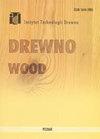The influence of number and size of sample plots on modelling growing stock volume based on airborne laser scanning
IF 0.9
4区 农林科学
Q3 MATERIALS SCIENCE, PAPER & WOOD
引用次数: 17
Abstract
Current forest growing stock inventory methods used in Poland are based on statistical methods using field measurements of trees on circular sample plots. Such measurements are carried out with traditional equipment, i.e. callipers and range finders. Nowadays, remote sensing based inventory techniques are becoming more popular and have already been applied in North America and some Scandinavian countries. Remote sensing based forest inventories require a certain amount of ground sample plots, which serve either as reference data used for model calibration and/or as a validation dataset for the assessment of the accuracy of modelled variables. Using a set of 900 ground sample plots and Airborne Laser Scanner (ALS) from the Milicz forest district, a statistical model for the estimation of plot growing stock volume was developed. Next, the developed model was once again fitted to different variants of sample plot size and number of sample plots. Each variant was selected from a full 900 sample plot set. The selection started from 800, 700, 600, ..., down to 25 plots, respectively, and was carried out in proportion to the dominant tree age range. To account for the area effect, each plot number variant was similarly tested with various sample plot areas, i.e. 500, 400, ..., 100 m2. Sampling in each variant was repeated in order to take into account the effect of a single selection. The results showed a strong relationship between obtained modelling errors and the size and number of used sample plots. It has been demonstrated that the number of sample plots has no influence on the accuracy of GSV estimation above about 300-400 sample plots (about 500 sample plots for bias), whereas sample plot size has a visible impact on estimation accuracy,基于机载激光扫描的样地数目和大小对生长量建模的影响
波兰目前使用的森林生长量清查方法是基于圆形样地树木实地测量的统计方法。这种测量是用传统设备进行的,即卡尺和测距仪。如今,基于遥感的盘存技术越来越流行,并已在北美和一些斯堪的纳维亚国家得到应用。基于遥感的森林清查需要一定数量的地面样地,这些样地可以作为模型校准的参考数据和/或作为评估模拟变量准确性的验证数据集。利用Milicz林区900个地面样地和机载激光扫描仪(机载激光扫描仪),建立了估算样地蓄积量的统计模型。接下来,将开发的模型再次拟合到样本地块大小和样本地块数量的不同变体中。每个变体都是从一个完整的900个样本图集中选择的。从800、700、600……,分别减少到25个样地,并按优势树龄比例进行。为了解释面积效应,每个样地数目的变化都用不同的样地面积进行了类似的测试,即500、400、…, 100平方米。为了考虑到单一选择的影响,每个变体的抽样都是重复的。结果表明,所获得的建模误差与使用的样本地块的大小和数量之间存在很强的关系。研究表明,在300-400个样本地(约500个样本地为偏差)以上,样本地数量对GSV估计精度没有影响,而样本地大小对估计精度有明显影响。
本文章由计算机程序翻译,如有差异,请以英文原文为准。
求助全文
约1分钟内获得全文
求助全文
来源期刊

Drewno
MATERIALS SCIENCE, PAPER & WOOD-
CiteScore
1.10
自引率
12.50%
发文量
0
审稿时长
>12 weeks
期刊介绍:
Wood. Research papers. Reports. Announcements" ("Drewno") is an international scientific journal that publishes original results of innovatory basic and applied research concerning technological, technical, economic and ecological issues important for the wood science and forest-based industries, including their environment, and interesting to the international recipients. "Drewno" is an Open Access biannual journal.
Aims and scope:
wood science: anatomy, biology, chemistry, physics
wood mechanical and chemical technology, inter alia, sawmilling, composite wood products, wooden construction, furniture making, wood pulp, paper making
material engineering, biocomposites, nanocomposites
material management
environmental protection, safety of the processes, products and working stations
biotechnology
bioenergy, biofuels
forestry: harvesting and wood quality
wood-based industries economics
The Editorial Board of the journal especially welcomes articles concerning increase in wood resources (wood mobilisation); innovative composites and lignocellulosic materials; new trends in the protection, modification and finishing of wood; biorefining of raw wood material; "green" building; new technologies of wood waste recycling; sustainable development; innovation management; and business networks.
 求助内容:
求助内容: 应助结果提醒方式:
应助结果提醒方式:


